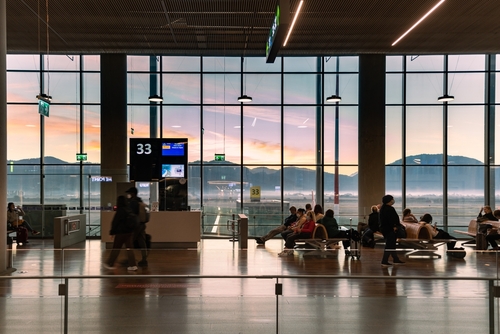

This article is only available to Macro Hive subscribers. Sign-up to receive world-class macro analysis with a daily curated newsletter, podcast, original content from award-winning researchers, cross market strategy, equity insights, trade ideas, crypto flow frameworks, academic paper summaries, explanation and analysis of market-moving events, community investor chat room, and more.
We track scheduled flights (what’s planned) and tracked flights (what took off) from a sample of the largest airports across the world.
Looking at data up to 22 August:
- Global flights are at 85% of 2019 levels and are declining from their highs in line with historic seasonality (Chart 1).
- Asia’s impressive recovery appears to be stalling, particularly in Thailand (-0.4% WoW) and South Korea (-1.3% WoW; Charts 2 and 4). Departures from Beijing have also slowed, but it (along with Singapore) may see a second wind. Effective from 24 August, foreign APEC holders and foreign students with valid residence permits can enter China without applying for new visas. This could have a large effect as China is the third largest receiver of international students globally.
- Meanwhile, the downturn in departures continues in the US (-1.5% WoW) and Europe (-1.0% WoW). However, the picture may not deteriorate as fast as first expected in Europe. Both Heathrow and Gatwick had implemented a cap on the number of travellers, and while Heathrow (-0.3% WoW) chose to extend theirs until 29 October from 11 September, Gatwick (-2.6% WoW) has announced it will not extend its traveller cap beyond the end of August.
- For more information on recent changes in COVID cases, please see our weekend report.
Information on long-term movements in-flight data is available below.
